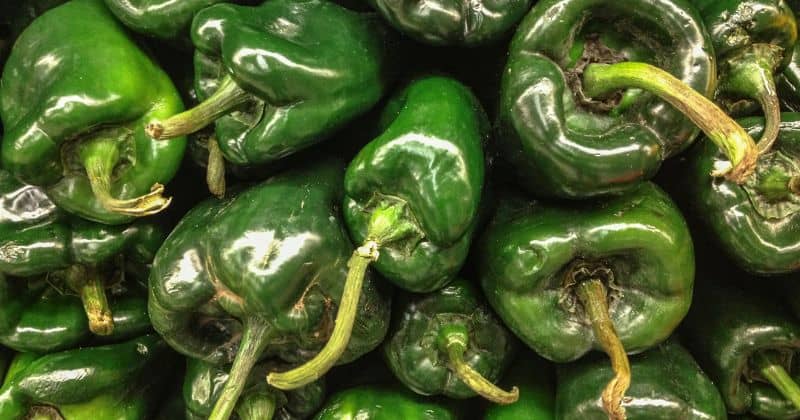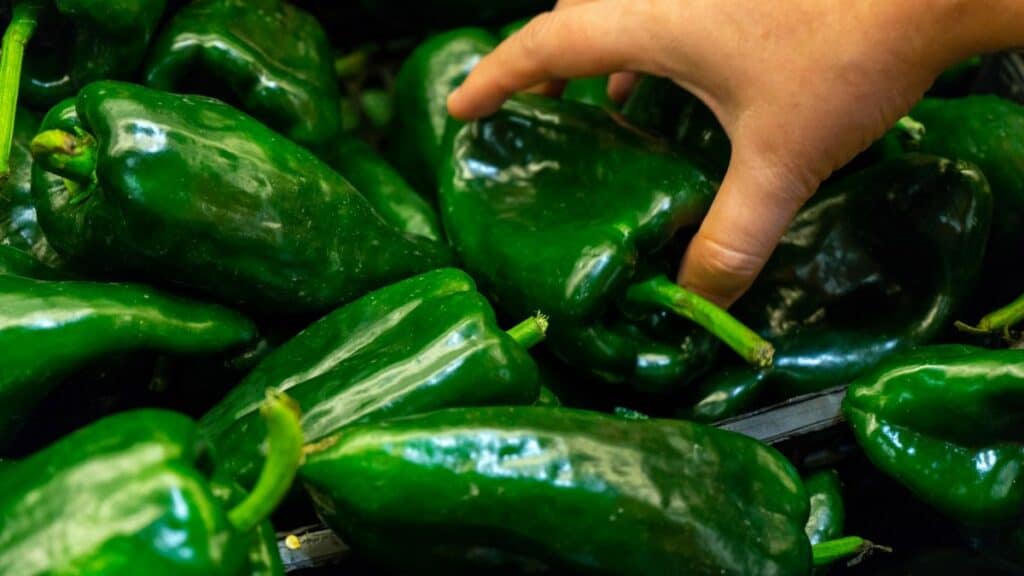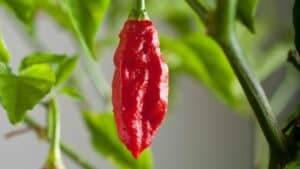As a chili pepper devotee, you may find yourself puzzling over pasilla and poblano peppers. While both Mexican varieties, are they really that different?
If you’ve wondered about choosing between them, here’s what you need to know:
- Pasillas are longer, drier, and darker than plump, green poblanos.
- Pasillas have an intense, earthy, raisin-like taste. Poblanos are milder with a fresh, subtly sweet flavor.
- Pasillas pack slightly more heat, but both are moderately spicy.
- Pasillas excel in complex sauces. Poblanos work well roasted or stuffed.
- They have enough unique traits to make them non-interchangeable.
Want the full comparison between pasilla and poblano peppers? Keep reading for more details on how to distinguish these two Mexican chilis in flavor, spiciness, appearance, and best culinary uses.
Pasilla and Poblano Pepper Profiles
First, a quick primer on exactly what defines these two chilis:
Pasilla Peppers

- Long, slim, and dark brownish-black
- A dried form of chilaca peppers
- Rich, raisin and chocolate-like flavor
- Moderately spicy
- Used in moles, sauces, stews
Poblano Peppers

- Plump, heart-shaped pods like bell peppers
- Deep forest green color when fresh
- Mild, earthy, and subtly sweet taste
- Medium spiciness
- Often stuffed and baked
Now that we’ve outlined their characteristics, let’s directly compare pasilla and poblano differences.
Dimensional Differences
Pasillas have a distinctly longer and thinner silhouette than poblanos.
- Pasillas are typically 4-6 inches long by around 1 inch wide. Their lengthy tapered shape resembles long, slender fingers.
- Poblanos are more compact at 3-5 inches long and 2-3 inches wide. Their shape is like a small, stubby bell pepper.
So if you’re seeking a longer, leaner chili, reach for pasillas. For a fatter, stout pepper, poblanos pack more volume.
Color and Appearance Contrasts
You can distinguish these peppers at a glance based on color alone:
- Pasilla’s defining trait is a dark, deep brown hue. When dried, they become nearly black.
- Poblanos are a bright, grassy green when fresh. As they ripen, they turn red.
Pasilla’s dramatically darker shades clearly set them apart. Watch for poblano’s vivid green skins so you know which pepper you’re prepping.
The Fresh vs. Dried Debate
Here’s a key difference many overlook–pasillas are dried, while poblanos are fresh:
- Pasillas are dried, mature chilaca peppers. The drying process gives them their intense flavor.
- Poblanos are always consumed fresh. You’ll never find dried poblano peppers.
This makes pasillas shelf-stable while poblanos are more perishable. Both bring great flavor to recipes when used properly.
Flavor Profile Face-Off
While both tasty, pasilla and poblano peppers have noticeably different flavor compositions:
- Pasillas take on rich, raisin and chocolate notes after drying. They have a deep, earthy quality.
- Poblanos offer brighter, fresher flavors like bell peppers. They have a sweetness and creaminess when cooked.
So choose pasillas when seeking an intense, layered chili flavor. Pick poblanos for a cleaner, brighter, peppery taste.
Showdown: Spiciness Explained
Many people assume all chilis pack equal heat. But pasilla and poblano levels differ:
- Pasillas land around 1,000-2,000 Scoville units, putting them in the middle of the heat spectrum.
- Poblanos range from 500-1,000 units, making them very mild. More sweet than heat.
While neither are extremely hot, pasillas do register more
Preferred Uses for Each Pepper
Based on their attributes, pasillas and poblanos shine in different dishes:
Pasillas
- Mole sauces and adobos
- Meat rubs and marinades
- Chile rellenos
- Salsas and hot sauces
- Chili, stews, soups
Poblanos
- Stuffed and baked chiles rellenos
- Fajitas and sautés
- Stews and soups
- Roasted and added to dishes
- Grilled, added to sandwiches
As you can see, pasillas work well in more complex
The Takeaway on Pasilla vs. Poblano
While pasilla and poblano peppers share a connection as popular Mexican chilis, they have distinctive differences that impact how they’re used.
In summary:
- Pasillas are longer, darker, and dried; poblanos are stouter, green, and fresh.
- Pasillas have an earthy, chocolate profile; poblanos taste brighter and sweet.
- Pasillas pack a bit more heat; poblanos are very mild.
- Each shine in certain dishes based on attributes.
Now that you know the details that set pasillas and poblanos apart, you can perfectly pick between them for recipes. Celebrate these peppers in all their glory!





